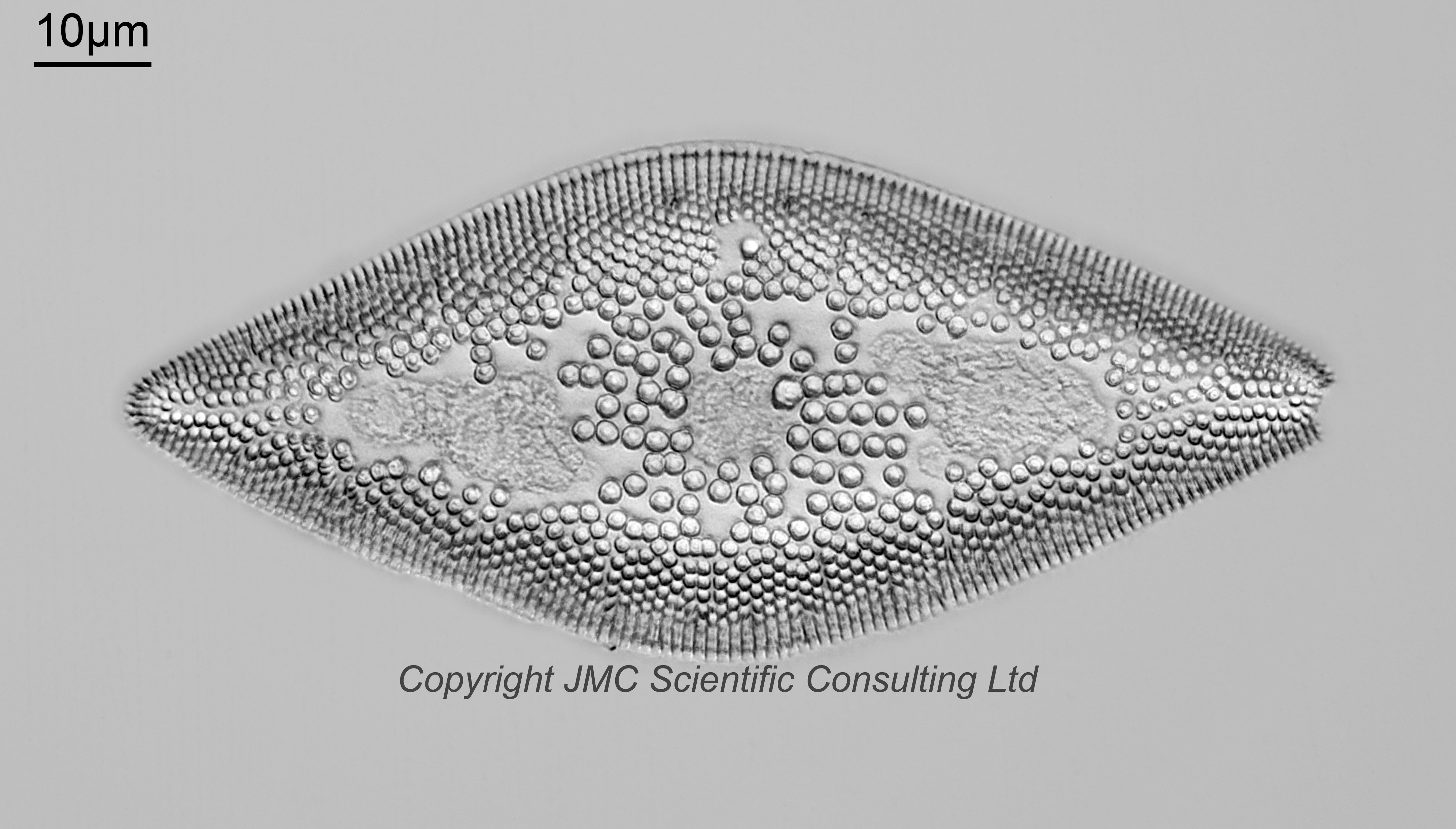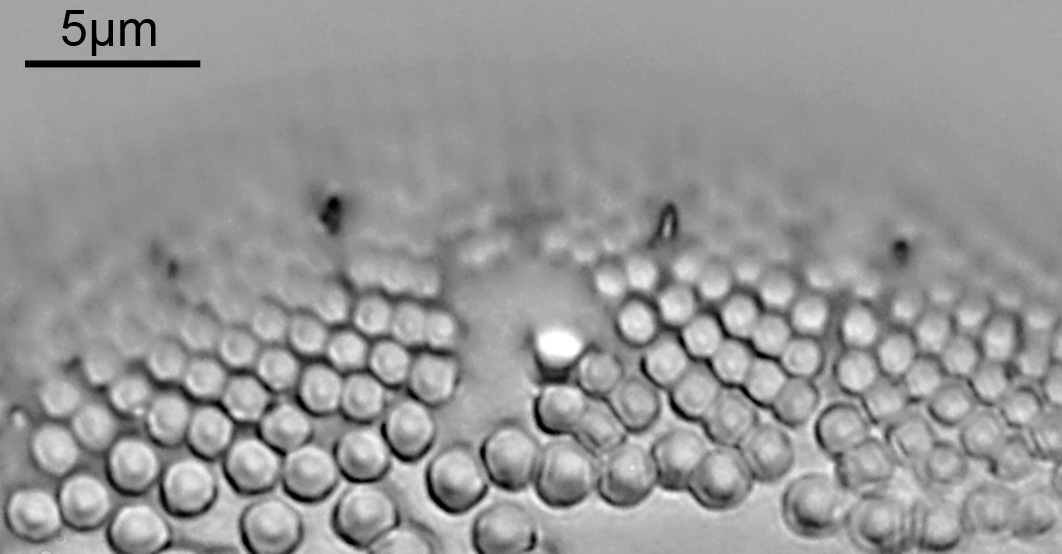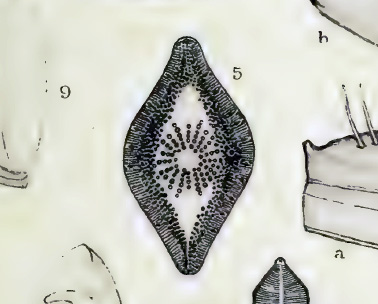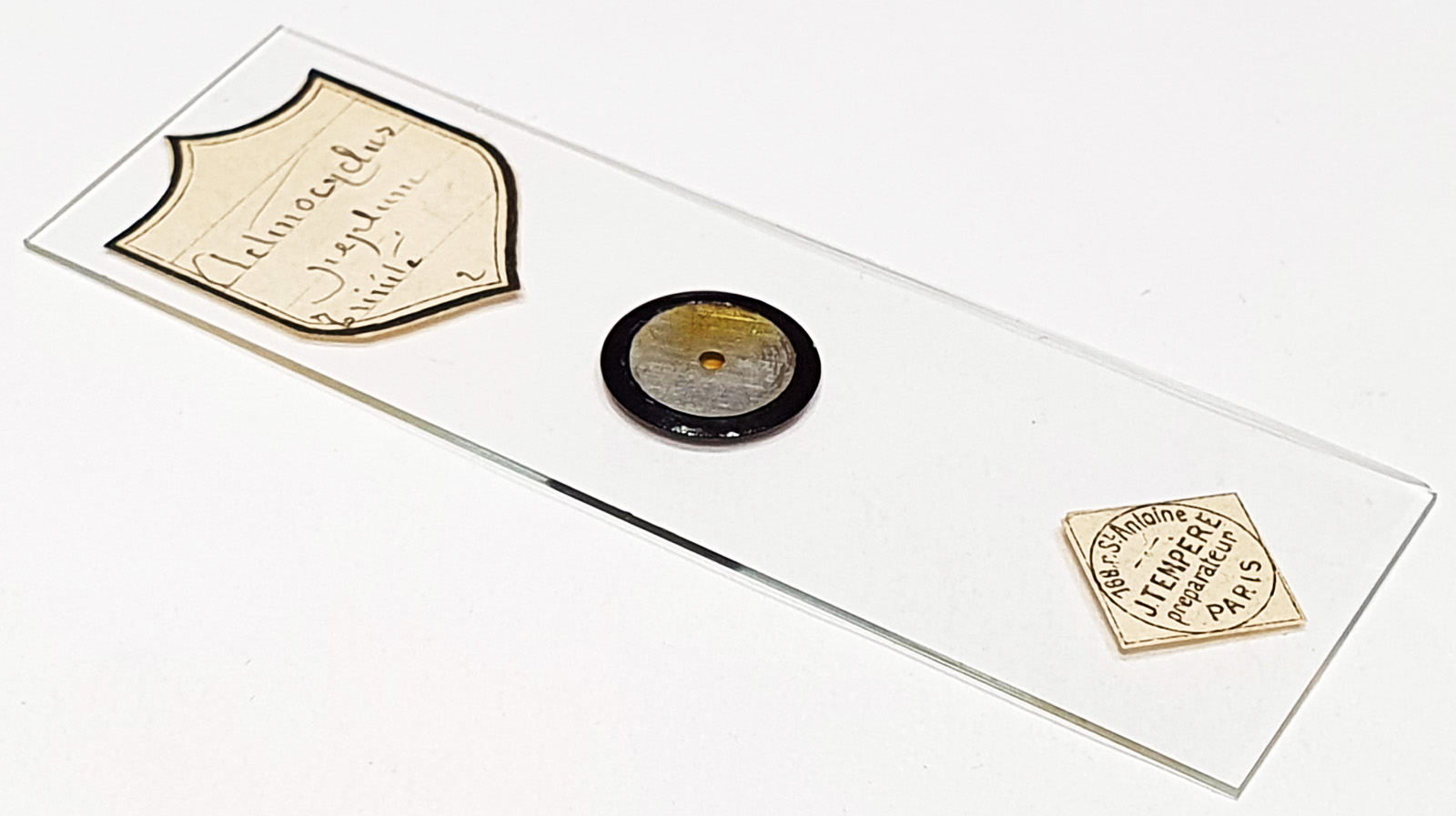



Actinocyclus peplum from La Trinité (which I think is in Martinique, West Indies). Single example on the slide. Prepared by J Tempère. Olympus BHB microscope using 450nm LED light. 63x Leitz Pl Apo 1.4 objective, oil immersion. Olympus Aplanat Achromat condenser, oil immersion, oblique lighting. 2.5x Nikon CF PL photoeyepiece. Monochrome converted d850 camera. 41 images stacked in Zerene (Pmax).
This has been written about in Brun, J. (1891). Diatomées espèces nouvelles marines, fossiles ou pélagiques. Mémoires de la Société de Physique et d’Histoire Naturelle de Genève, 31 (part 2, no.1): 1-47, pl. 11-22. Where it is described as follows (courtesy of Google Translate);
Actinocyclus (Cestodiscus) peplum J. Brun.
PI. XIX-fig. 4. (An error in Brun, this should be Figure 5).
Valve broadly lanceolate. The rounded sides and obtuse conical ends. Long. mm. 0.09 to 0.12, width. 0.04 to 0.055. The center of the valve carries a circuit strong pearls arranged in a crown or star. The other pearls fade into striations giving a wide ribbon border. Marginal spines clear and distant. The rest of the valve is smooth and offers a small hyaline channel towards each end.
Moron. La Trinité. Naparima (fossil). Quite common.
As mentioned, there is an error in Brun, where it says Figure 4 (should be Figure 5). Overall description looks to be a fairly good match. The spines are visible in the individual frames, however they are lost in the stack. I’m not sure I would say the central area has a ‘star’ or ‘crown’, but perhaps under lower magnification it could look like that. Based on Brun, presumably it is also known as Cestodiscus peplum.